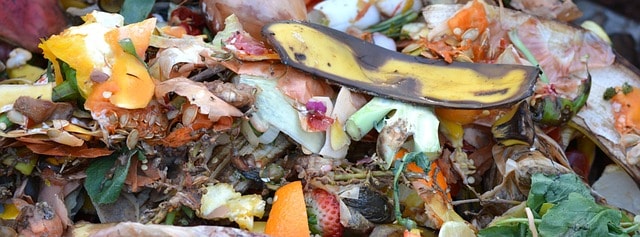Composting is something that people often consider doing whether to help the environment or simply to get rid of compostable waste. Composting offers a number of potential other benefits included soil health and plant growth for your garden.
But what about the smell? Rotting and decaying bio waste tends to cause a smell which can attract flies, ants and other undesirables. How can you avoid or at least minimize it so that it does not become an issue moving forward?
Compost these things to minimize the bad smell
There are several types of materials that can be composted without causing bad smells or attracting insects and flies. These include:
- Yard waste: Leaves, grass clippings, and small twigs are great carbon-rich materials for composting.
- Certain food scraps: Vegetable and fruit scraps, coffee grounds, and tea leaves are great nitrogen-rich materials for composting. Avoid adding meat, dairy, and oily foods, which can attract pests and produce bad smells.
- Garden debris: Pruned plants, flowers, and weeds are great materials for composting.
- Paper and cardboard: Shredded newspaper, paper, and cardboard can be added to the compost pile as a carbon-rich material.
- Eggshells: Crushed eggshells add calcium to the compost pile.
- Hair and fur: Pet hair and fur from hairbrushes can be added to the compost pile.
- Bedding materials: Straw, hay, and sawdust can be added to the compost pile as a carbon-rich material.
It’s also important to note that composting should be done in a well-ventilated area, and the compost pile should be kept moist but not too wet to avoid bad smells and attraction of insects.
Turning the compost pile regularly also helps aerate the pile and speed up decomposition.
Potential downsides to composting to be aware of
- Time and effort required: Composting can take a significant amount of time and effort to set up and maintain.
- Space requirements: Composting requires a dedicated space for the compost pile or bin, which may not be feasible for some people.
- Odor: If not managed properly, composting can produce unpleasant odors. Use the list above as a guide of what to compost and what to avoid.
- Attracting pests: Composting can attract pests such as rodents and insects if not properly managed. Ants, flies and other undesirables often get attracted to the smell and food source.
- Temperature requirements: Composting requires a specific range of temperatures to function properly, and if not maintained, it can slow down the decomposition process.
- Limited materials: Not all materials can be composted, such as meat, dairy, and treated wood.
- Not suitable for all climates: Composting may not be suitable for certain climates, such as extremely cold or dry regions, as it may not be possible to maintain the necessary moisture and temperature levels.
Steps to get started with composting
Before you get into composting, it’s worth noting what it actually entails so you can see if it’s worth your time and effort.
Getting started with composting can be relatively simple and straightforward. Here are some steps to consider:
- Choose a location: Select a spot in your yard or garden that is convenient for you to access and has good drainage. Choosing one away from your house is ideal in case there is a smell emanating, so as to not attract insects near the house. Of course, you don’t want to put it too close to your neighbor’s house and cause a problem with them.
- Choose a container: You can use a compost bin, a compost tumbler, or make your own compost pile. Chose one with a good quality closable lid.
- Add the right materials: Composting relies on a balance of carbon-rich “brown” materials, such as leaves and twigs, and nitrogen-rich “green” materials, such as grass clippings and food scraps.
- Moisten the compost: Keep the compost moist but not too wet. A well-functioning compost should be about as damp as a wrung-out sponge.
- Turn the compost: To aerate the pile and help speed up decomposition, turn the compost pile every few days with a pitchfork or compost aerator.
- Monitor the temperature: The ideal temperature range for composting is between 120-160°F, you can use a compost thermometer to monitor the temperature.
- Use the compost: The compost is ready to use when it becomes a dark, rich soil-like substance with a consistent texture. It can be used to amend soil, adding organic matter, and nutrients to your garden.
Remember that composting can take several months to a year, depending on the materials and the conditions in your compost pile.
Another composting option involving the use of worms is called vermiculture. Read my article called Composting With Worms: Vermiculture 101 to learn more.
Be patient and enjoy the process!


